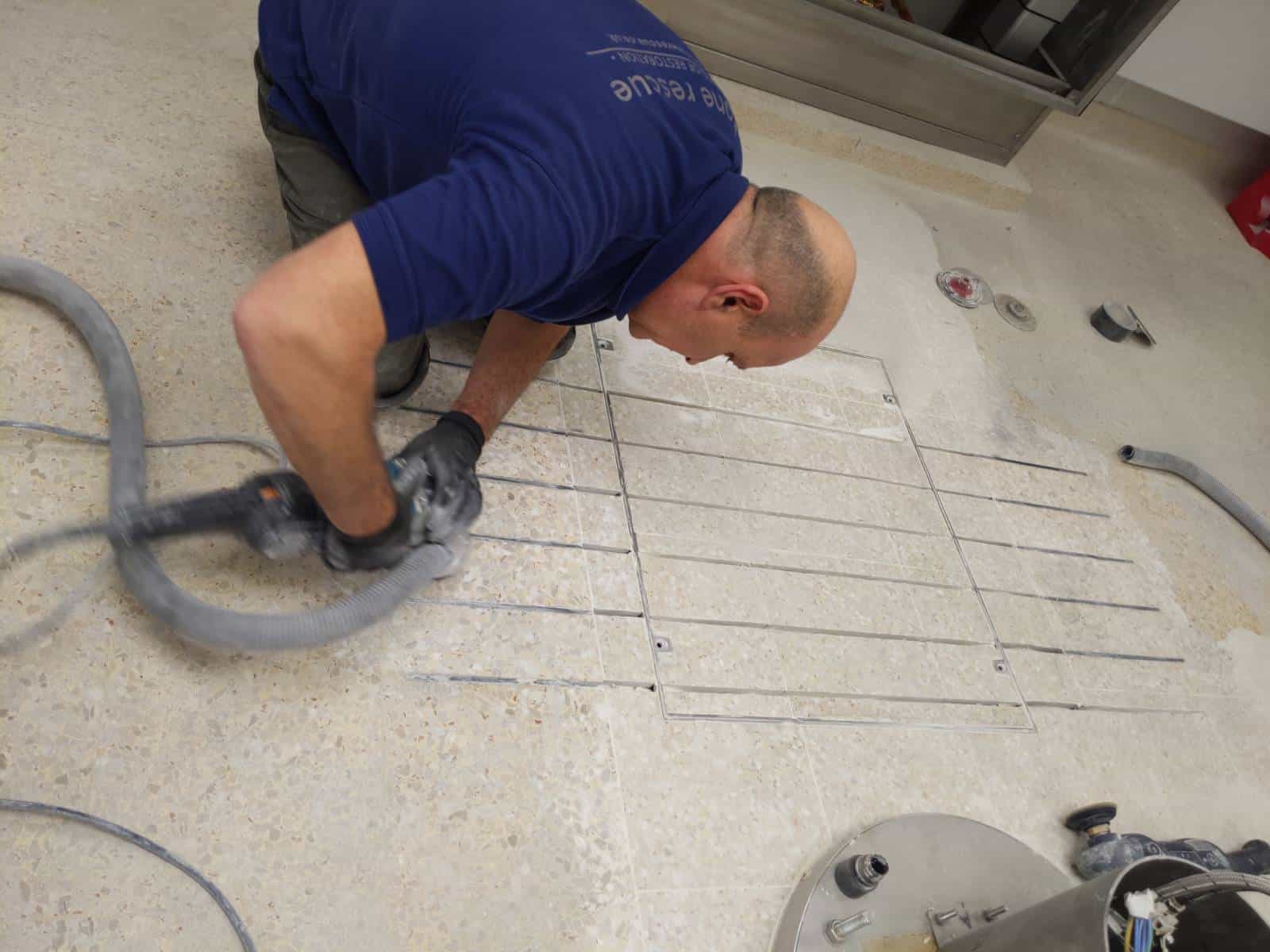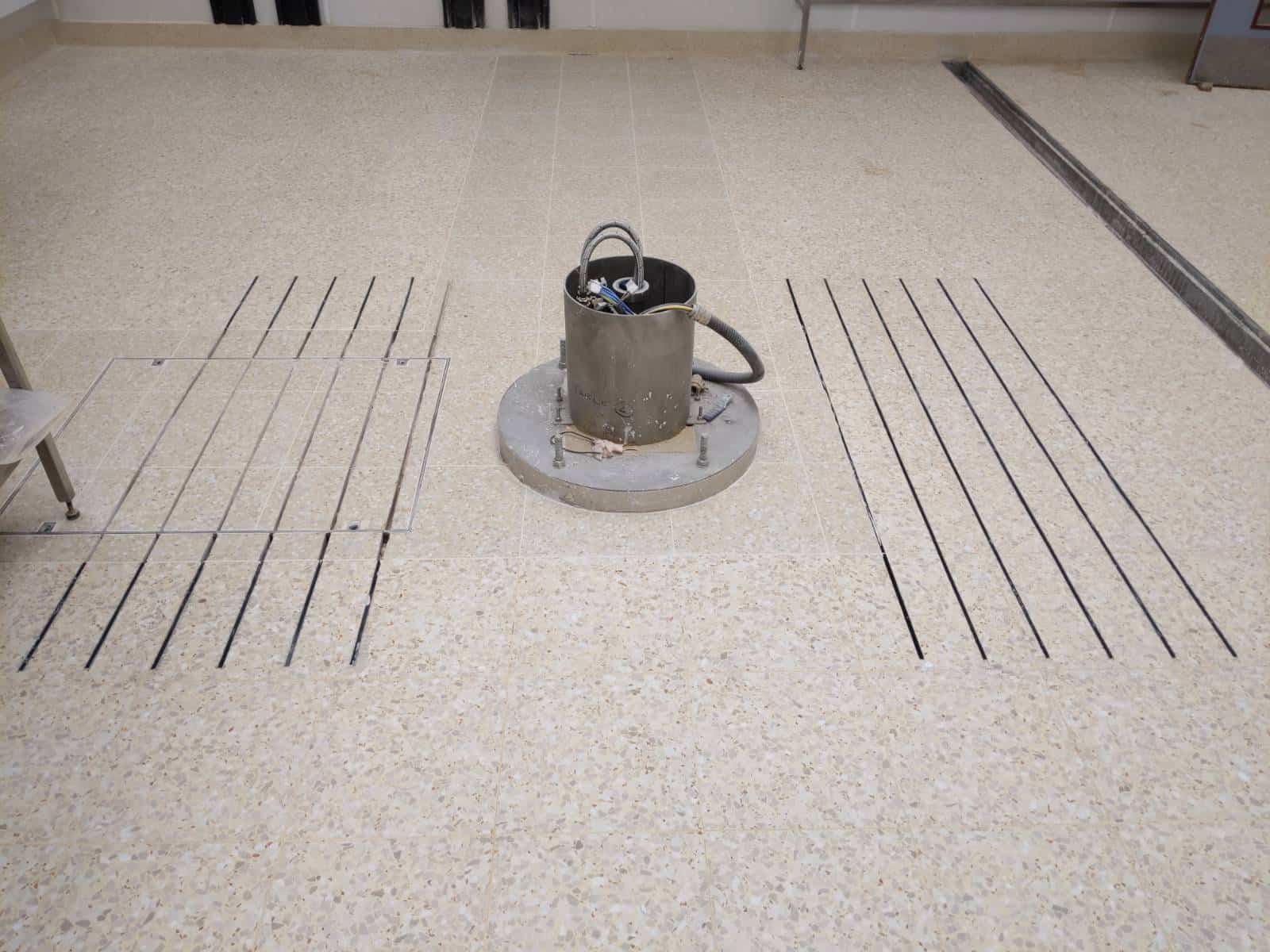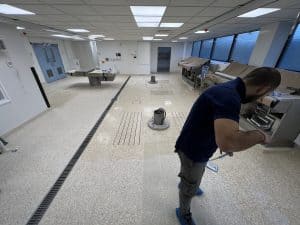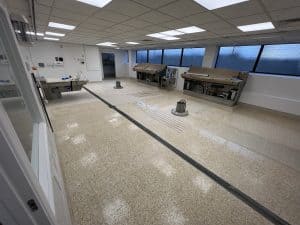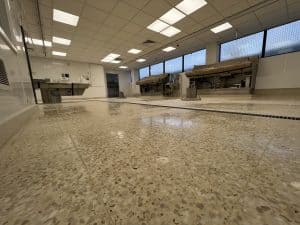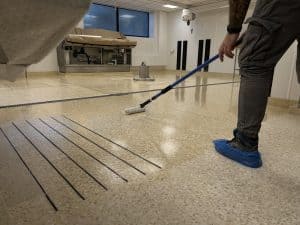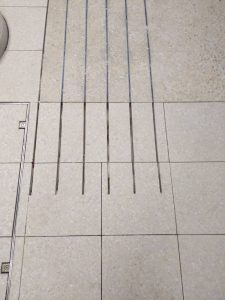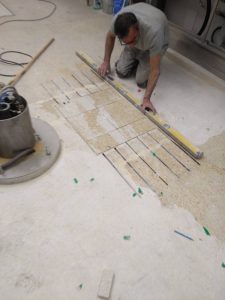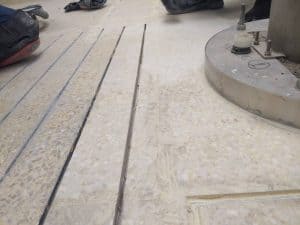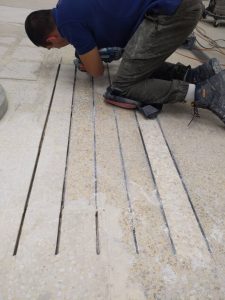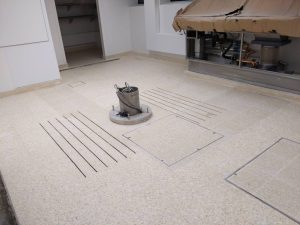Cleaning, repairing, and refinishing are just some of the procedures in restoring terrazzo. To begin, the terrazzo must be cleaned properly to eliminate any dirt, dust, or stains that have built up over time. This can be accomplished with the use of chemical cleansers and mechanical scrubbing.
Next, you’ll want to fix up any terrazzo that’s broken or chipped. Fixing this requires fixing the damaged portions with an epoxy or cementitious material. To avoid noticeable seams, the repair material should be precisely matched to the colour and texture of the surrounding terrazzo.
It is necessary to refinish the terrazzo once the repairs have been made. This is accomplished by using a grinding tool to smooth out the surface and get rid of any blemishes. Finally, the terrazzo is coated with a protective coating to ward off stains and wear.
The lifespan of the flooring may be extended with terrazzo restoration, which is another advantage. The terrazzo may be made more resistant to normal usage by fixing any damage and covering it with a protective material. If repairs and replacements aren’t required as often, that’s money saved over time.
As a whole, restoring a terrazzo floor is a practical and economical option for extending the life of the flooring and preserving its aesthetic value. While there may be some outlay of resources in the beginning, the payoff will be substantial in the end.
In addition, a non-slip sealer can be applied to the floor in order to pass the Slip Test or to be in compliance with the strict regulations that applies to areas that are open to the public or are used for commercial purposes.





